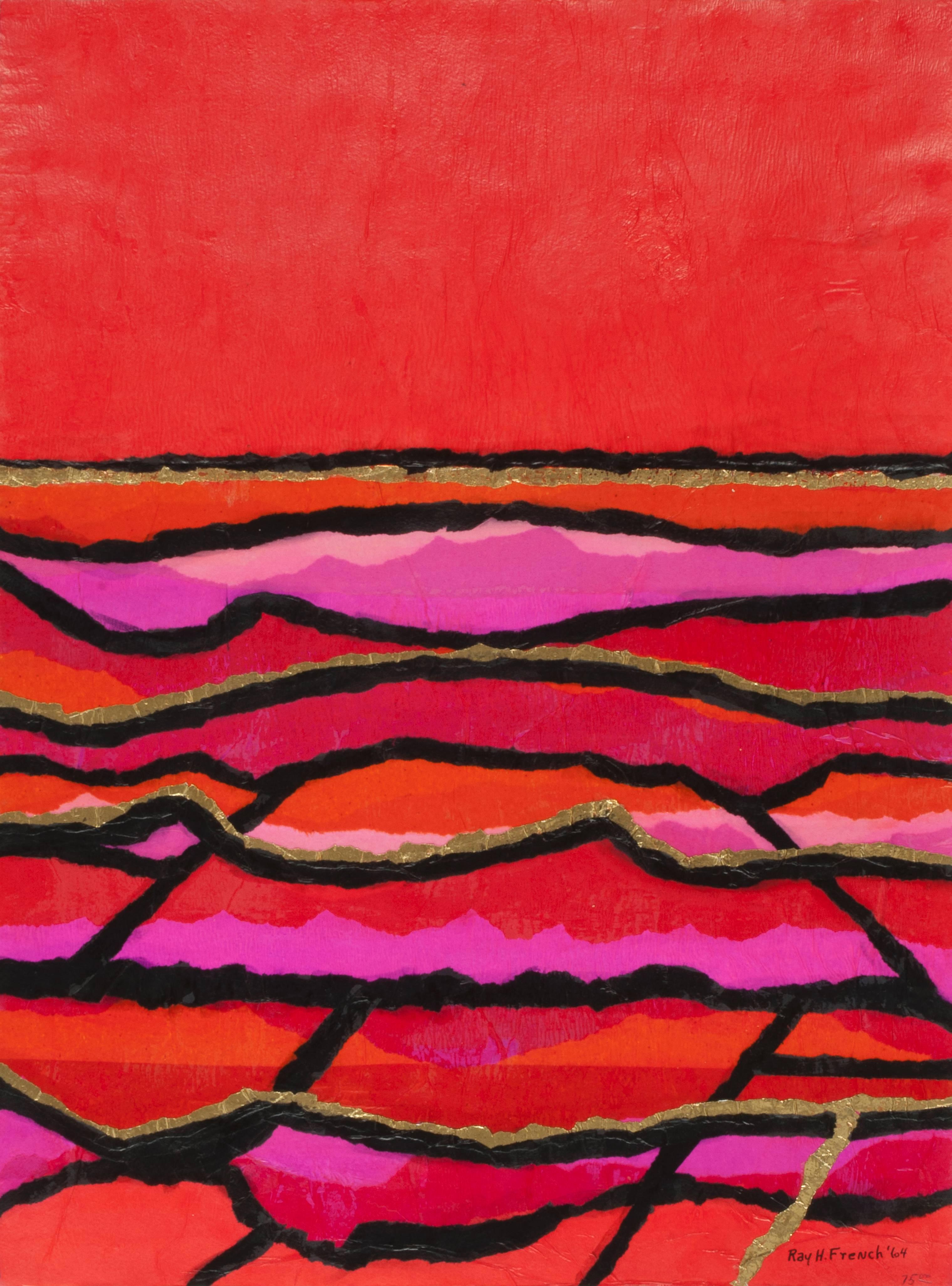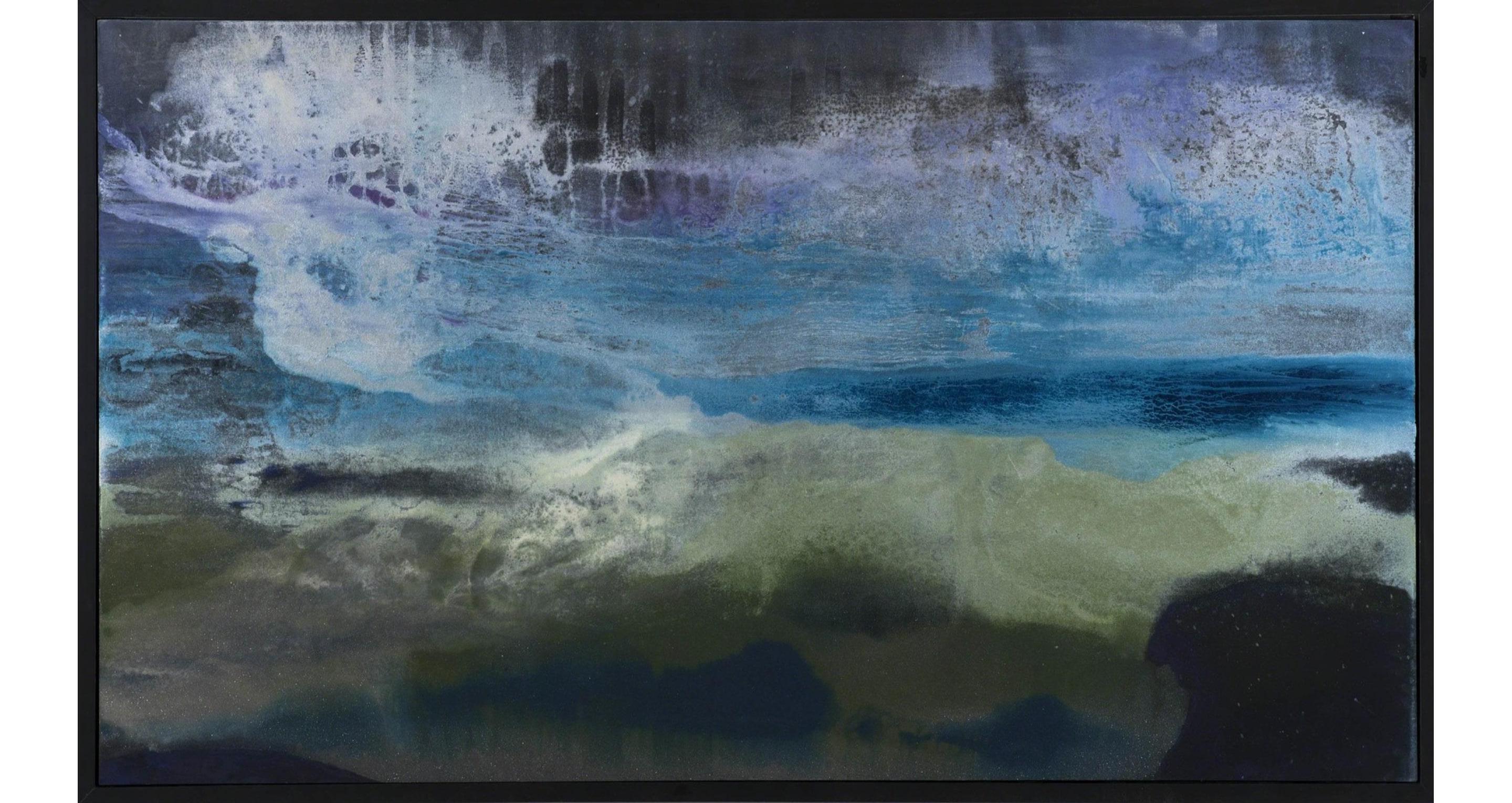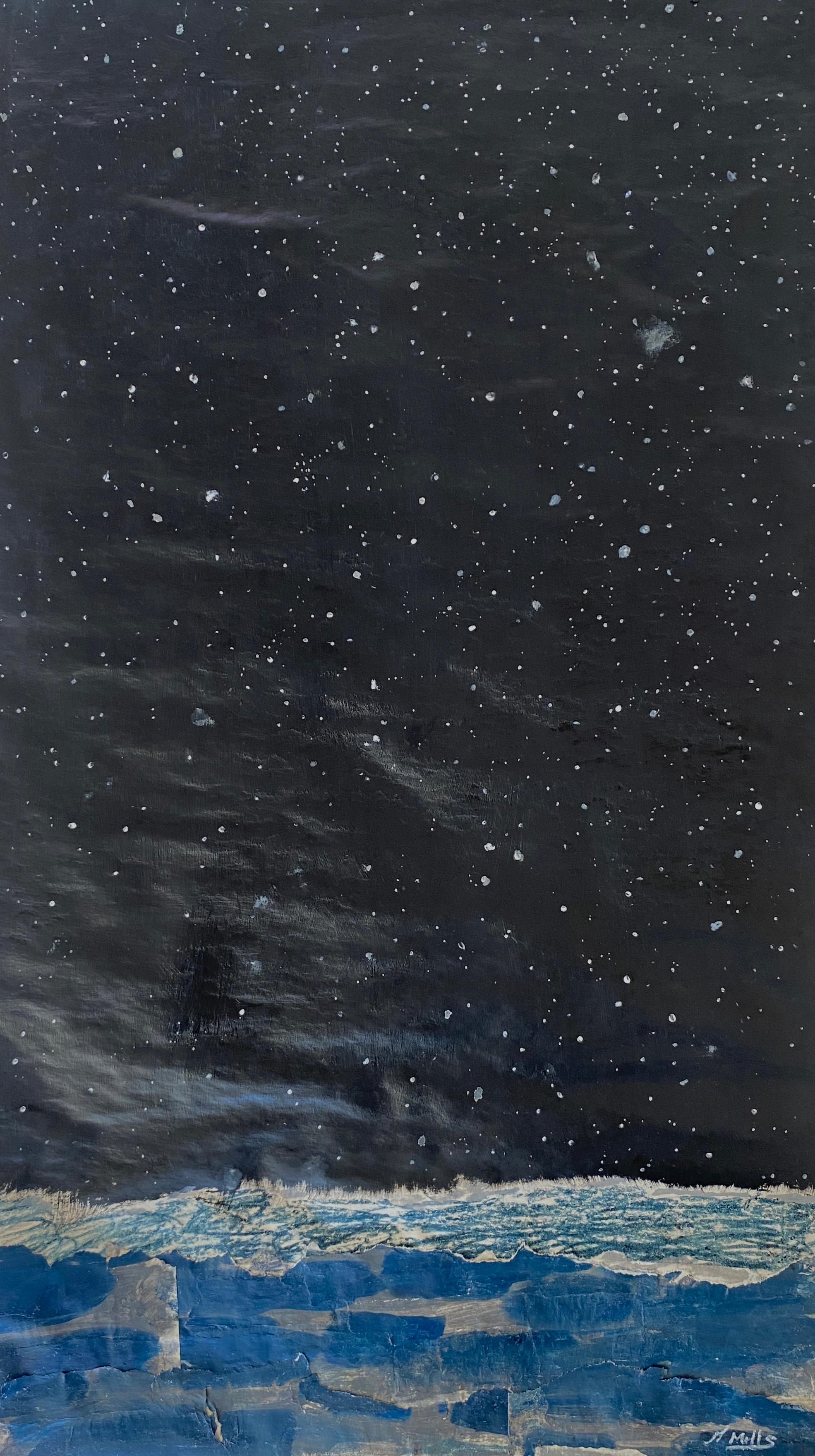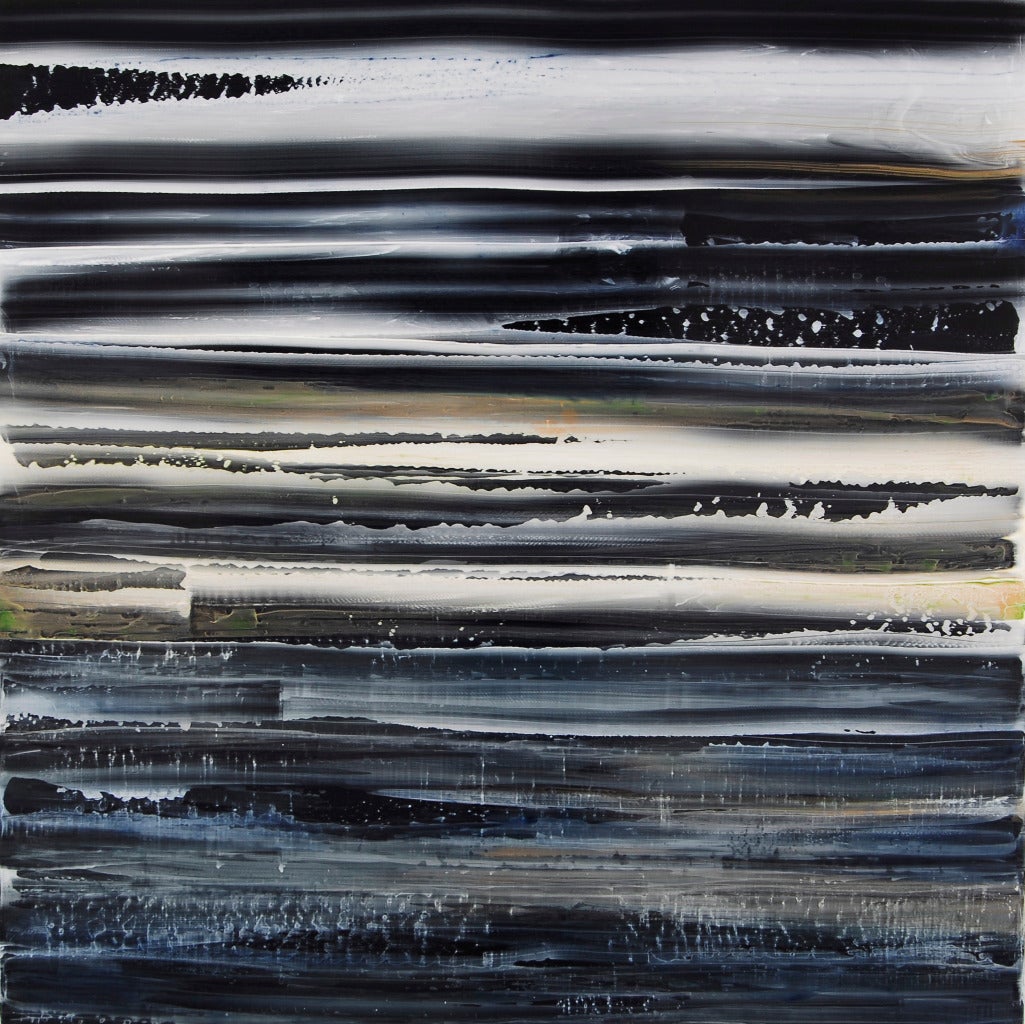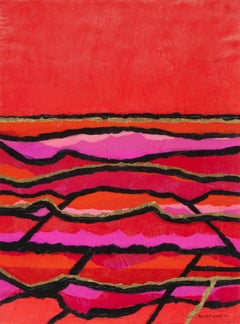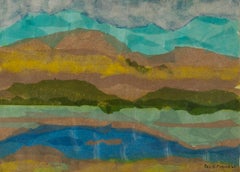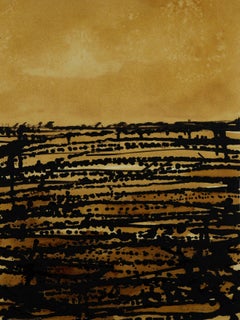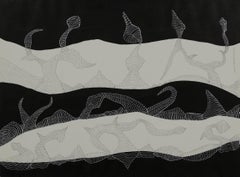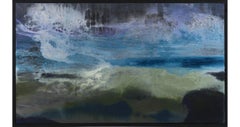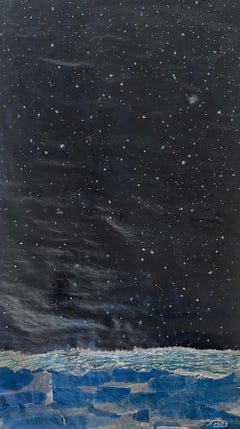Want more images or videos?
Request additional images or videos from the seller
1 of 6
Ray H. FrenchUntitled (Seascape at night)1964
1964
$2,500
£1,894.22
€2,173.47
CA$3,517.90
A$3,867.14
CHF 2,032.39
MX$46,961.21
NOK 25,353.60
SEK 24,020.75
DKK 16,221.17
About the Item
Untitled (Seascape at night)
Tissue paper collage on Fabriano wove paper, 1964
Signed in ink lower left
Annotated 42 in pencil on verso
Condition: Excellent
Image/Sheet size: 10 x 13 7/8 inches
Part of a suite of collages created during the artist's sabatical leave from teaching, spent in Florence, Italy, studying at the Accademia D'Arte Firenze in 1963-1964.
Ray H. French: The Evolution of an Artistic Innovator
Printmaker, painter, and sculptor Ray H. French was born in Terre Haute, Indiana on May 16, 1919. Terre Haute was a cultural wasteland before the opening of the Sheldon Swope Art Museum in 1942. Thus, with a father as a coal miner and carpenter, art remained a luxury for Ray. Nevertheless, local art teachers Mabel Mikel Williams and Nola E. Williams helped to foster his creativity and unshakable drive to create things of beauty.
After high school, Ray attended the John Herron School of Art in Indianapolis. His studies there were interrupted by the outbreak of World War II, during which he developed surveillance photographs for the Army Air Force. After the war, Ray transferred to the University of Iowa on the G.I. Bill, where he received both his BFA and MFA degrees. The University of Iowa during the 1940s was a cultural mecca with many major art historians and artists. While in Iowa, Ray played an important role in this culture by becoming a founding member of the Iowa Print Group under Mauricio Lasansky.
Following his graduation in 1948, Ray experienced firsthand the rapid rise in creative printmaking in America. By 1949, he had exhibited at The Brooklyn Museum, the Walker Art Center, and MOMA New York. Ray’s early style of printmaking is characterized by pure line engraving on copper plates, a technique suited perfectly to his study of the beauty of animals. This charming and whimsical subject ran counter to the concurrent trends of Lasansky’s horrors of war and Hayter’s non-objectivity, but was equally effective in capturing the public’s attention. Walruses was purchased by the Victoria and Albert Museum, exhibited at MOMA New York and received the Arthur D. Allen Memorial Purchase Prize for its “skillful and economic use of line.” Shortly thereafter, Ray’s treatment of animals developed further into larger format mixed intaglio prints utilizing hard ground, soft ground, etching, and engraving, as exemplified in The Swan.
By the late 1950s, Ray’s style evolved into organic non-objectivity, in which he incorporated personal autobiographical vignettes and symbolism. His work during this time was further characterized by a departure from the traditional squared compositional format to his cutting and rounding of the plate to accentuate organic shapes. Ray’s 1959 Enchantment remains particularly illustrative of his use of etching and soft ground intaglio. Enchantment was successfully exhibited at the Brooklyn Museum of Art for the 12th National Print Exhibition of The American Federation of the Arts and received the Pennell Purchase Prize from the Library of Congress in 1960.
In the 1960s, Ray also started to focus on blind embossing, which he had first experimented with at the University of Iowa. He was extremely prolific and successful with this medium, selling hundreds of prints in small editions of 10 through the Associated American Artist Gallery in New York. In 1966, Ray built upon his mastery of embossing and began developing a shadow box presentation called a graphic construction that combined color, blind embossing, and multi-layered cutouts to revel intaglio compositions. Noted curator William Lieberman purchased Ray’s masterpiece graphic construction, Moon Rays, on the behalf of MOMA New York and another impression was gifted to the University of Iowa Museum of Art by Alan and Ann January in 2004.
Throughout his artistic career, Ray was also a professor and administrator at DePauw University, which occupied much of his time. Outside of his creative expression, Ray was most proud of his teaching and influencing students to find beauty in their daily lives. Specifically, he was a particularly fervent advocate of printmaking and joined the ranks of many of Lasansky’s students who went on to establish printmaking programs and departments and to further lift the stature of intaglio printmaking. During Ray’s time at DePauw, he received grants to travel around Europe. His yearlong stay in Florence led to a series of etchings, drypoints, and woodcuts of Italian and Etruscan subjects and provided inspiration for many years.
In 1984, Ray retired from his university service to work in a private studio behind his home on DePauw’s campus. After several life threatening illnesses, Ray decided to return to his early creative style of realist depictions of nature and landscape. Eventually, Ray’s health deteriorated further with the onset of macular degeneration. Legally blind, he continued to create art until shortly before his death in 2000 at the age of 80. “Sometimes when I look at a work I create, I am amazed at what inspired it. I ask myself, how on earth did I create this?” said Ray once. Ultimately, this quest to find beauty and create inspiring works of art provided the greatest source of Ray’s happiness and fulfillment, evidenced by the breadth and quality of his artistic legacy.
- Creator:Ray H. French (1919-2000, American)
- Creation Year:1964
- Dimensions:Height: 10 in (25.4 cm)Width: 13.88 in (35.26 cm)
- Medium:
- Movement & Style:
- Period:
- Condition:
- Gallery Location:Fairlawn, OH
- Reference Number:Seller: FA121581stDibs: LU14015623192
About the Seller
5.0
Recognized Seller
These prestigious sellers are industry leaders and represent the highest echelon for item quality and design.
Platinum Seller
Premium sellers with a 4.7+ rating and 24-hour response times
Established in 1978
1stDibs seller since 2013
813 sales on 1stDibs
Typical response time: <1 hour
Associations
International Fine Print Dealers Association
- ShippingRetrieving quote...Shipping from: Fairlawn, OH
- Return Policy
Authenticity Guarantee
In the unlikely event there’s an issue with an item’s authenticity, contact us within 1 year for a full refund. DetailsMoney-Back Guarantee
If your item is not as described, is damaged in transit, or does not arrive, contact us within 7 days for a full refund. Details24-Hour Cancellation
You have a 24-hour grace period in which to reconsider your purchase, with no questions asked.Vetted Professional Sellers
Our world-class sellers must adhere to strict standards for service and quality, maintaining the integrity of our listings.Price-Match Guarantee
If you find that a seller listed the same item for a lower price elsewhere, we’ll match it.Trusted Global Delivery
Our best-in-class carrier network provides specialized shipping options worldwide, including custom delivery.More From This Seller
View AllSeascape at Sunset
By Ray H. French
Located in Fairlawn, OH
Seascape at Sunset
Collage with tissue paper and gold foil on Fabriano paper, 1964
Signed and dated in ink, lower right (see photo)
Provenance:
Estate of the artist
Martha A. French...
Category
1960s Mixed Media
Materials
Mixed Media
Untitled (Tuscan Landscape)
By Ray H. French
Located in Fairlawn, OH
Untitled (Tuscan Landscape)
Tissue paper collage on Fabriano support
Signed and dated lower right in ink
Provenance:
Estate of the artist
Martha A. French Trust
Created while the art...
Category
1960s American Modern Mixed Media
Materials
Mixed Media
Untitled
By Ray H. French
Located in Fairlawn, OH
Signed and dated "1962" by the artist lower right.
Mixed media on heavy paper.
Done for a show to fund a trip to Italy.
Category
1960s Abstract Abstract Drawings and Watercolors
Materials
Ink, Mixed Media
Sea Forms
By Ray H. French
Located in Fairlawn, OH
Signed and dated center right edge; Annotated "48" lower left
Provenance:
Estate of the artist
One of a suite of 120 drawings that the artist did in 1 month.
Most were sold thro...
Category
1960s Abstract Abstract Drawings and Watercolors
Materials
Ink, Pen
Untitled (Abstraction)
By Ray H. French
Located in Fairlawn, OH
Signed and dated by the artist vertically lower left edge.
Part of an experimental series of works using motor oil, India Ink, adhesives, sand, and various other mediums.
Category
1960s Abstract Paintings
Untitled
By Ray H. French
Located in Fairlawn, OH
Signed and dated lower left
Created in 1964 while the artist was living in Florence, Italy
Collage with tissue paper and printed images and text
From the Estate of the Artist
Category
1960s Abstract Expressionist Mixed Media
Materials
Mixed Media
You May Also Like
Midnight at the Beach: Contemporary Abstract Painting
Located in New York, NY
Midnight at the Beach is a 2016 contemporary abstract painting by Nancy Pantirer. This painting captures the essence of staring into the ocean horizon a...
Category
2010s Abstract Paintings
Materials
Acrylic
$7,480 Sale Price
20% Off
Ocean/Night Sky
By Gigi Mills
Located in New York, NY
Gigi Mills' work is born out of her desire to simplify and reduce each moment to its essence; she achieves this by omitting mundane details from life that can often obscure genuine e...
Category
2010s Contemporary Landscape Paintings
Materials
Crayon, Oil, Archival Paper
Night Tide no. 1016
By Jessie Morgan
Located in Lincoln, MA
painting on aluminum
Price Upon Request
Night Sea
By Franco Salas Borquez
Located in Boston, MA
Born in 1979 in Chile, on the island of Chiloé, into a family of sailors, Franco Salas Borquez has kept a certain relationship with the sea, both nurturing and dangerous. The dark and raging sea, the one that commands respect.
As a child, he distinguished himself as a chess player, until he became national champion at 13 years old. The discipline is almost considered a sport in Chile. His talent as a player makes him represent his country in many tournaments. “I trained four hours a day. "
But the young man is also "absolute" passionate about drawing. So much so that he decides to embark on a career as an artist. It was in France, where he first landed as a language assistant, that his career took off. His first sea paintings quickly spotted him and opened the doors of institutional collections to him in 2010. Affirming an increasingly contemporary pictorial approach, Franco Salas Borquez works his works with a sort of memorial archive of oceanic images...
Category
2010s Paintings
Materials
Canvas, Oil
Price Upon Request
Ocean Vista #2
By Stephen Bruce
Located in Atlanta, GA
Born and raised in Sacramento, Stephen Bruce is a talented artist, who has been creating acid paintings on copper for many years.
Patinas on metal can be...
Category
21st Century and Contemporary American Modern Mixed Media
Materials
Mixed Media
Night Mist, Painting, Oil on Paper
By Tiffany Blaise
Located in Yardley, PA
Original mixed media painting of a seascape at night. This dynamic artwork is inspired by the movement and energy of the ocean and expresses the vitality and transformative power of ...
Category
2010s Expressionist Paintings
Materials
Oil
